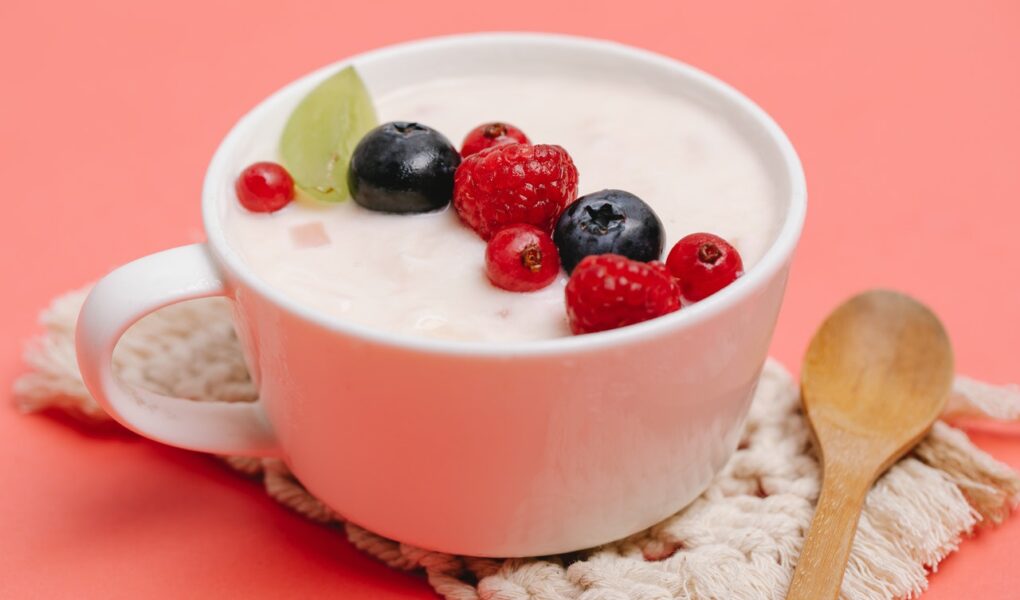Yeast is naturally found on the skin and in the body. Different aspects balance their quantity in and on the body—any disruption in this equilibrium results in yeast infection.
Candida albicans is the most common yeast infection in women. Most women will have this illness at some point in their lives (1).
The Candida fungus is found naturally in the vaginal area. Lactobacillus bacteria control the development of this fungus. Bacteria and the fungus Candida are in natural equilibrium. This equilibrium keeps the fungus from overgrowing. These bacteria, however, will not work effectively if the system is out of balance and disturbed. This functional impairment and imbalance results in a vaginal yeast infection (2).
Yeast infections in the vaginal area are very painful and very common. They are simple to diagnose and treat. It’s essential to diagnose a yeast infection as early as possible.
Yeast overgrowth in the vagina can be caused by pregnancy, diabetes, and stress. Vaginal yeast infections can also be caused by taking too many antibiotics.
A vaginal yeast infection causes the vagina and the tissues around it to swell and turn red. It also causes vaginal itching and burns, which causes vaginal pain. If you have a yeast infection in your vaginal area, you should eat foods high in vitamins, probiotics, and healthy fats (3).
Medication
Antifungal drugs are often recommended and used by healthcare providers to treat yeast infections. The two most common ways to treat yeast infections in the vaginal area are the oral approach and the topical method.
In the oral approach, the medicine is taken by mouth. The topical approach is to apply medicine to the infected area. Boric acid, miconazole, nystatin, and other medicines are used in the topical approach. Your healthcare providers will give you information about each type of drug and tell you how to use each one correctly.
Home remedies for yeast infections
Yeast infections are easy and effective to treat and can be done using different home remedies. During a yeast infection, these home remedies help many women feel better. Some of these home remedies use things you may already have at home. Here are some popular home remedies for vaginal yeast infections:
- Boric acid
Boric acid capsules can help you get better if you are suffering from a yeast infection. In addition, boric acid might benefit women with recurrent or chronic yeast infections. It has been used for over 100 years to treat vaginal infections (4).
Boric acid being antiviral and antifungal can treat Candida albicans and other Candida yeast strains more resistant to medication.
Boric acid can also be purchased without a prescription, and placed into gelatin capsules that you put in your vagina.
Make an appointment with your doctor before you try boric acid suppositories to get a proper diagnosis. If pregnant, don’t use boric acid without consulting your doctor. Your healthcare provider will tell you how to use suppositories with boric acid and other alternative treatments effectively (5). Now, keep in mind that a large amount of boric acid is very toxic. If your skin is sensitive, this may not be the best choice for you.
- Plain Greek yogurt
Probiotics are good bacteria found in natural, unsweetened, unflavored yogurt. These are good for your health and help get the balance of bacteria and yeast in your body back to where they should be (6). Yogurt is considered a probiotic because it has live bacteria like Lactobacillus acidophilus. These bacteria are essential for a healthy vaginal environment (7).
The best kind of yogurt to use for this home remedy is plain Greek yogurt. Make sure there is no extra sugar, flavouring, or fruit in the yogurt. Candida can grow faster when there is extra sugar in the body. To get the full benefits from this home remedy, you can eat the yogurt, put it on your vulva (the skin around your vagina), or put it in your vagina.
- Tea tree oil
Tea tree oil has been used for a long time as a home remedy for yeast infection because it kills fungi. In addition, it can be beneficial for treating candida yeast infections. Tea tree oil is an essential oil, so it needs to be mixed with another oil called a carrier oil. For example, people can soak a tampon in 5 ml warmed coconut oil with 2–5 drops of tea tree oil. In this scenario, it is crucial to change the tampon often. Vaginal suppositories with tea tree oil can treat vaginal fungal infections (8). In addition, some women feel better when they put diluted tea tree oil on a tampon and put it in their vaginas for the night.
- Garlic
Eating more garlic can help you eliminate yeast infections. Garlic is known to kill yeast and bacteria, and is an excellent way to kill Candida. Candida yeast can’t grow as well when this is used (9). Some women have also tried putting garlic in their bodies instead of eating it. For example, placing a garlic clove in the vagina with a string attached overnight can help eliminate yeast infections. People with sensitive skin shouldn’t use garlic, as those with sensitive skin may get burnt from using this home remedy.
- Coconut and Oregano oil
Coconut oil can kill Candida albicans yeast because it has antifungal properties. Raw organic coconut oil can be taken by mouth or put on the skin to relieve pain (10).
Wild oregano, called Origanum Vulgare, is used to make oregano oil. This plant has antifungal properties. Candida albicans can’t grow when these things are around. People can put oregano oil-filled capsules in their vaginas to treat yeast infections (11).
- Apple cider vinegar
Apple cider vinegar baths are often used to treat yeast infections. The acidic part of the vinegar can kill yeast and other harmful microorganisms. Before putting vinegar on the skin, it should be mixed with water. Also, consider including apple cider vinegar in your diet (12).
Yeast infections are something that many women go through, and are never pleasant to experience. We hope that by knowing the most popular home remedies available for yeast infection, you will be able to find a certain level of relief and fight infection, after a simple trip to your kitchen cupboard or the grocery store. To prevent reoccurring yeast infections, contact your healthcare provider for further guidelines. A proper prescription is necessary to get rid of the infection entirely.
About The Author
Dan Jackowiak, Nc, HHP, is the Founder of Yeast Infection Advisor. Dan is a Holistic Healthcare Practitioner and Nutritional Consultant that personally suffered from yeast and bad bacterial overgrowth of the gut for most of his life. The information on his website is a combination of his own nutrition and holistic training, life experiences, collaboration with fellow experts on his team, and over 18 years of studying medical research on candida yeasts infections of all types, which has allowed him to take his life and health back help others overcome yeast-related health problems and digestive problems of all kinds.
- References
1. IQWiG (Institute for Quality and Efficiency in Health Care). Vaginal yeast infection (thrush): Overview [Internet]. InformedHealth.org. 2019. Available from: https://www.ncbi.nlm.nih.gov/books/NBK543220/
2. Oriel JD, Partridge BM, Denny MJ, Coleman JC. Genital Yeast Infections. Vol. 4, British Medical Journal. 1972. p. 761–4.
3. Kabir MA, Ahmad Z. Candida Infections and Their Prevention . Vol. 2013, ISRN Preventive Medicine. 2013. p. 1–13.
4. Iavazzo C, Gkegkes ID, Zarkada IM, Falagas ME. Boric acid for recurrent vulvovaginal candidiasis: The clinical evidence. Vol. 20, Journal of Women’s Health. 2011. p. 1245–55.
5. Sobel JD, Chaim W, Nagappan V, Leaman D. Treatment of vaginitis caused by Candida glabrata: Use of topical boric acid and flucytosine. Vol. 189, American Journal of Obstetrics and Gynecology. 2003. p. 1297–300.
6. Darvishi M, Jahdi F, Hamzegardeshi Z, Goodarzi S, Vahedi M. The Comparison of vaginal cream of mixing yogurt, honey and clotrimazole on symptoms of vaginal candidiasis. Vol. 7, Global journal of health science. 2015. p. 108–16.
7. Ehrström S, Daroczy K, Rylander E, Samuelsson C, Johannesson U, Anzén B, et al. Lactic acid bacteria colonization and clinical outcome after probiotic supplementation in conventionally treated bacterial vaginosis and vulvovaginal candidiasis. Vol. 12, Microbes and Infection. 2010. p. 691–9.
8. Di Vito M, Mattarelli P, Modesto M, Girolamo A, Ballardini M, Tamburro A, et al. In Vitro Activity of Tea Tree Oil Vaginal Suppositories against Candida spp. and Probiotic Vaginal Microbiota. Vol. 29, Phytotherapy Research. 2015. p. 1628–33.
9. Shuford JA, Steckelberg JM, Patel R. Effects of fresh garlic extract on Candida albicans biofilms [1]. Vol. 49, Antimicrobial Agents and Chemotherapy. 2005. p. 473.
10. Ogbolu DO, Oni AA, Daini OA, Oloko AP. In vitro antimicrobial properties of coconut oil on Candida species in Ibadan, Nigeria. Vol. 10, Journal of Medicinal Food. 2007. p. 384–7.
11. Manohar V, Ingram C, Gray J, Talpur NA, Echard BW, Bagchi D, et al. Antifungal activities of origanum oil against Candida albicans. Vol. 228, Molecular and Cellular Biochemistry. 2001. p. 111–7.
12. Mota ACLG, de Castro RD, de Araújo Oliveira J, de Oliveira Lima E. Antifungal Activity of Apple Cider Vinegar on Candida Species Involved in Denture Stomatitis. Vol. 24, Journal of Prosthodontics. 2015. p. 296–302.
- Websites
- https://www.ncbi.nlm.nih.gov/books/NBK543220/
- https://www.ncbi.nlm.nih.gov/pmc/articles/PMC1787055/
- https://www.ncbi.nlm.nih.gov/pmc/articles/PMC4062852/
- https://pubmed.ncbi.nlm.nih.gov/21774671/
- https://pubmed.ncbi.nlm.nih.gov/14634557/
- https://www.ncbi.nlm.nih.gov/pmc/articles/PMC4803919/
- https://pubmed.ncbi.nlm.nih.gov/20472091/
- https://pubmed.ncbi.nlm.nih.gov/26235937/
- https://www.ncbi.nlm.nih.gov/pmc/articles/PMC538912/
- https://www.researchgate.net/publication/6187814_In_Vitro_Antimicrobial_Properties_of_Coconut_Oil_on_Candida_Species_in_Ibadan_Nigeria
- https://pubmed.ncbi.nlm.nih.gov/25219289/




